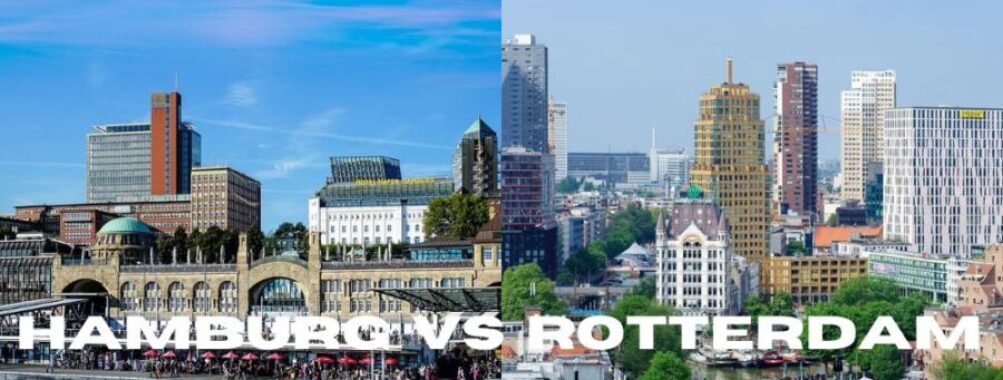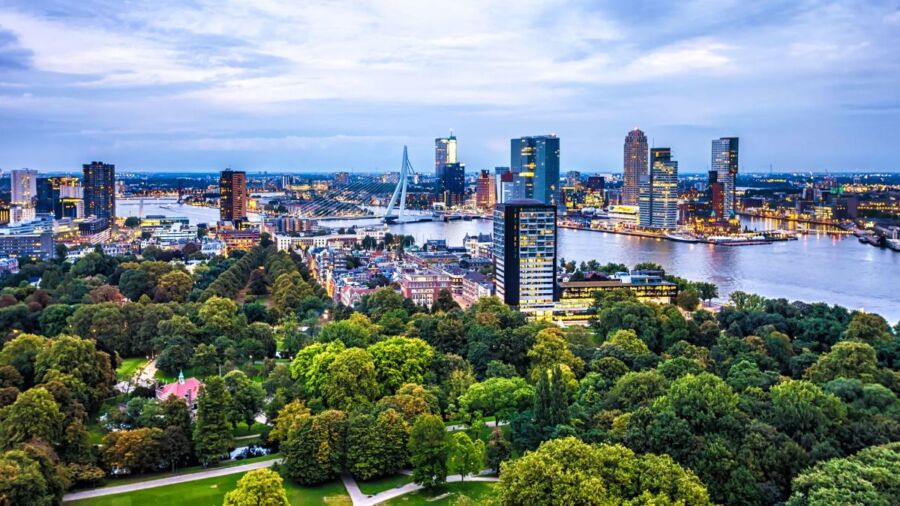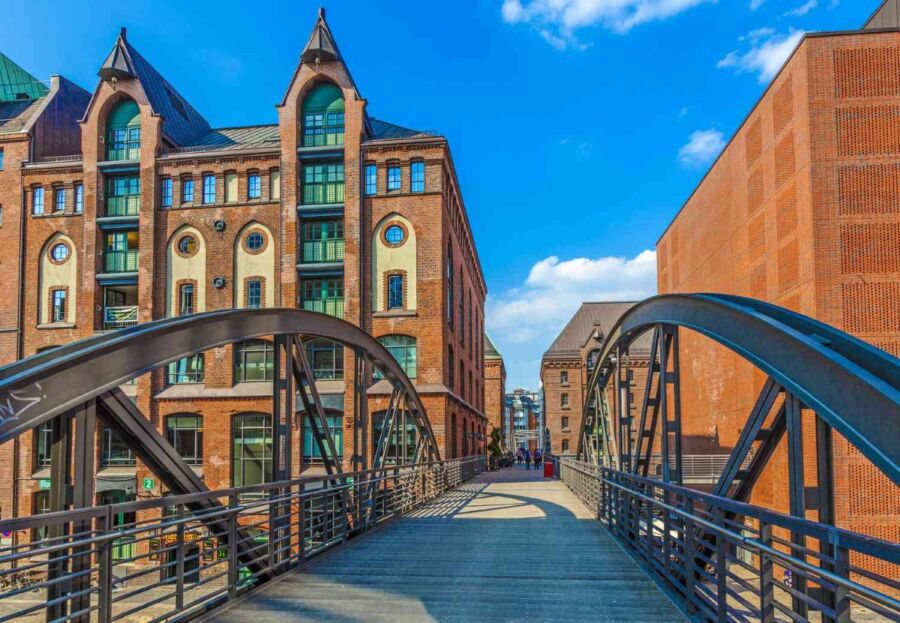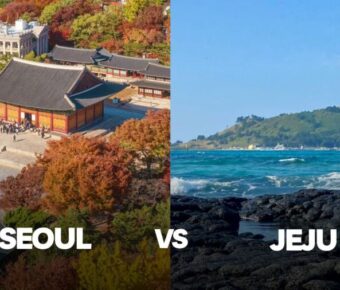
Hamburg vs Rotterdam: Battle of Europe’s Megaports Reveals Hidden Tourist Gems
Rotterdam and Hamburg share many similarities as major port cities in Northern Europe. Both cities blend rich maritime history with modern architecture and vibrant cultural scenes. These bustling harbors serve as gateways to their respective countries, making them fascinating destinations for travelers interested in maritime culture and urban exploration.
Rotterdam is slightly more expensive than Hamburg, with an overall cost of living about 6% higher and rental prices that are 27.5% higher than its German counterpart. The Dutch city stands out for its bold contemporary architecture and innovative spirit, while Hamburg charms visitors with its traditional Hanseatic character and extensive waterways.
The cities experience similar weather patterns, especially during summer, when both enjoy around 200 hours of sunshine. The comparable climates make either destination a good choice for summer travel, with Hamburg getting slightly more rain at 82mm compared to Rotterdam’s 75mm in July.
Contents
- Geographic Location and History
- Hamburg’s Historical Background
- Rotterdam’s Historical Development
- Economic Landscape
- Hamburg’s Economy
- Rotterdam’s Economic Influence
- Demographics and Cost of Living
- Population Statistics
- Comparison of Living Costs
- Culture and Lifestyle
- Leisure and Entertainment in Hamburg
- Rotterdam’s Cultural Offerings
- Educational Environment
- Studying in Hamburg
- University Life in Rotterdam
- Climate and Environment
- Weather Patterns in Hamburg
- Rotterdam’s Climate
- Transport and Connectivity
- Navigating Hamburg
- Getting Around in Rotterdam
- Frequently Asked Questions
- What are the distinctive cultural differences between Hamburg and Rotterdam?
- Can you compare the economic significance of the ports of Hamburg and Rotterdam?
- What are the key differences in architecture and urban planning in Hamburg versus Rotterdam?
- How does the quality of life and public services compare in Hamburg and Rotterdam?
- Which city should one choose for maritime business opportunities: Hamburg or Rotterdam?
- What are the differences in entertainment and nightlife between Hamburg and Rotterdam?
- More Travel Guides
Geographic Location and History
Both cities sit at crucial points along major European waterways, with histories deeply rooted in maritime trade. These strategic positions helped them grow into powerhouse port cities that shaped the development of their respective nations.
Hamburg’s Historical Background

Hamburg lies along the Elbe River about 100 km from the North Sea. The city’s prime location made it perfect for maritime trade. As a member of the medieval Hanseatic League, Hamburg gained special trading privileges that boosted its growth.
Today Hamburg stands as Germany’s second-largest city. Its port remains one of Europe’s busiest shipping hubs. The city holds the unique status of being both a city and a German state (Land).
The “Free and Hanseatic City of Hamburg” title reflects its long history of independence and trading power. This special status helped Hamburg build strong trade connections across Europe.
Rotterdam’s Historical Development

Rotterdam started as a small fishing village in the 14th century. The city sits where the Rhine and Meuse rivers meet the North Sea. At first, fishing and farming were the main activities.
The city grew slowly until major harbor expansions in later centuries. Rotterdam’s perfect spot at the mouth of key rivers helped it become Europe’s biggest port.
War changed Rotterdam’s path when bombing destroyed much of the old city in 1940. This led to bold rebuilding plans. The new Rotterdam emerged with modern architecture and an expanded port.
The port drives Rotterdam’s identity today. It handles more cargo than any other European port, earning its nickname as Europe’s “Gateway to the World.”
Economic Landscape
Hamburg and Rotterdam stand as major economic powerhouses in Europe, each with distinct strengths in trade, commerce, and maritime activities. The cities show notable differences in living costs, purchasing power, and economic focus.
Hamburg’s Economy

Hamburg ranks as Germany’s wealthiest city and second-largest business center. The Port of Hamburg creates thousands of jobs and drives massive economic activity through container shipping and logistics.
The city maintains lower living costs than Rotterdam, giving residents more purchasing power. A typical salary in Hamburg covers about 1.7 months of expenses, making it an attractive spot for workers and businesses.
Local industries span from aerospace manufacturing to digital media. Airbus maintains a major facility here, while numerous tech startups call Hamburg home.
Rotterdam’s Economic Influence

Rotterdam’s economy centers on Europe’s biggest port, which processes millions of containers yearly. The maritime sector creates a ripple effect, supporting countless jobs in shipping, trade, and logistics.
Living costs run about 6% higher than Hamburg, with housing prices showing the biggest gap at 27.5% more expensive. Restaurant prices also trend higher.
The city attracts significant foreign investment thanks to its strategic location and world-class port facilities. Many global companies base their European operations here, creating a diverse job market focused on trade, transport, and maritime services.
Demographics and Cost of Living
Hamburg and Rotterdam share similarities as major port cities, but differ in their population makeup and living expenses. Money goes further in Hamburg, while Rotterdam has seen faster population growth in recent years.
Population Statistics

Hamburg stands as Germany’s second-largest city with about 1.8 million residents in its urban core. The city’s population has grown steadily but modestly over the past decade.
Rotterdam ranks as the Netherlands’ second biggest city after Amsterdam, home to roughly 650,000 people. The city has experienced significant growth from immigration and young professionals moving in.
Both cities feature diverse populations due to their roles as international shipping hubs. Foreign-born residents make up about 16% of Hamburg’s population and 28% of Rotterdam’s residents.
Comparison of Living Costs
A single person needs around €5,300 per month in Hamburg versus €5,600 in Rotterdam to maintain a similar lifestyle. This includes rent, food, transport and other basic expenses.
Daily costs in Hamburg tend to be lower:
- Basic lunch with drink: €15
- Monthly transport pass: €90
- One-bedroom apartment rent: €1,200
Rotterdam’s higher costs reflect the overall Dutch cost of living:
- Basic lunch with drink: €18
- Monthly transport pass: €102
- One-bedroom apartment rent: €1,400
Compared to their respective capitals Berlin and Amsterdam, both cities offer more affordable living costs while maintaining high quality of life standards.
Culture and Lifestyle
Both cities offer unique cultural experiences shaped by their maritime heritage and modern influences. Each has developed its own distinct character through arts, food, and entertainment.
Leisure and Entertainment in Hamburg

Hamburg’s nightlife centers around the famous Reeperbahn district, where music clubs and theaters light up after dark. The city takes pride in its theatrical tradition with musicals and plays drawing crowds to venues like the Elbphilharmonie.
The Sternschanze neighborhood attracts creative types with its mix of cafes, vintage shops, and street art. Many locals spend weekends at the Alster Lake, sailing or relaxing at waterfront restaurants.
Hamburg’s food scene blends traditional northern German cuisine with modern influences. The city’s signature dishes include Fischbrötchen (fish sandwiches) and Labskaus (sailors’ stew).
Rotterdam’s Cultural Offerings

Rotterdam’s modern art museums showcase innovative exhibitions. The Kunsthal and Boijmans Van Beuningen museums house impressive collections spanning classical to contemporary works.
The city’s cultural attractions and tours include regular festivals celebrating film, architecture, and music. The Witte de Withstraat street buzzes with galleries, bars, and international restaurants.
Rotterdam’s culinary landscape reflects its diversity. The Markthal food hall offers everything from Dutch cheese to Asian street food. The city’s proximity to Delft adds charm through day trips to see traditional Dutch culture.
Street art and urban culture thrive in areas like the Oude Haven (Old Harbor). Young creatives gather at spots like WORM and Bird for alternative entertainment and live music.
Educational Environment
Both cities offer strong academic opportunities with renowned universities and research institutions. Each has a distinct educational culture shaped by its maritime heritage and international connections.
Studying in Hamburg

Hamburg’s educational scene centers around the University of Hamburg, a prestigious institution with over 43,000 students. The city hosts 17 universities that specialize in fields like maritime studies, engineering, and arts.
Many programs are taught in English, making it easier for international students to study here. The campus areas spread across different neighborhoods, creating a lively student atmosphere throughout the city.
The Hamburg Research Center is a major hub that partners with businesses to drive innovation in shipping technology and renewable energy. Students can gain hands-on experience through these industry connections.
University Life in Rotterdam

Rotterdam’s Erasmus University stands out for its business and economics programs. The campus features striking modern architecture and high-tech facilities. About 28,000 students study here, with a large international population.
The city’s position between Utrecht and The Hague creates a knowledge corridor with easy access to multiple academic institutions. Students can take classes at partner universities in these nearby cities.
Rotterdam’s universities work closely with the port industry. Many research projects focus on maritime logistics, sustainability, and urban development. This creates unique internship chances for students interested in these fields.
The student housing is more affordable than in other Dutch cities. Many students live in renovated historic buildings or modern student complexes near campus.
Climate and Environment
Both harbor cities face unique climate challenges due to their coastal locations and maritime influences. Rising sea levels and increasing storm risks shape their environmental strategies.
Weather Patterns in Hamburg

Hamburg’s weather shows a strong maritime influence from the North Sea and Elbe River. The city sees mild winters with temperatures rarely dropping below freezing. Summer temperatures stay comfortable, averaging 22°C (72°F) in July and August.
Rain falls throughout the year in Hamburg. Spring brings frequent showers, while autumn sees the heaviest rainfall. The city gets about 750mm of rain annually.
Wind plays a big role in Hamburg’s climate. Strong gusts sweep in from the sea, especially during winter storms. These winds help keep air quality good by dispersing pollution.
Rotterdam’s Climate

Rotterdam’s location near the North Sea creates a temperate maritime climate. Winters stay relatively mild, with January temperatures around 2°C (36°F). Summers are pleasant but not hot, reaching about 23°C (73°F) in August.
The city gets plenty of rain – about 850mm yearly. Unlike many cities, Rotterdam’s rainfall spreads evenly across all seasons. Spring and fall bring more cloudy days.
Sea breezes cool Rotterdam in summer. The port city faces growing flood risks from storms and rising sea levels. Local engineers work hard to protect the city with innovative water management systems.
Transport and Connectivity
Both ports excel in their transportation networks, with extensive maritime, rail, and road connections linking them to major European destinations. Each city offers unique ways to move cargo and people efficiently through their sophisticated infrastructure.

Hamburg’s port connects to its hinterland through an impressive network of railways and highways. The city’s main railway station serves as a crucial hub for both cargo and passenger transport, linking to major German cities and beyond.
The port features advanced container terminals with direct access to the Elbe River. Ships can reach the North Sea in about 8 hours, making it a prime spot for maritime trade.
Public transport in Hamburg includes trains, buses, and ferries. The U-Bahn and S-Bahn systems cover most areas of the city, with frequent service to the port area.
Getting Around in Rotterdam

Rotterdam boasts Europe’s largest seaport, supported by extensive transport connections to neighboring countries. The Betuweroute railway line provides dedicated freight transport to Germany, giving Rotterdam a competitive edge.
The city’s metro system connects seamlessly with other forms of public transport. Water taxis and river buses offer unique ways to cross the Maas River.
The port area is accessible through multiple highways and railways. Automated guided vehicles move containers within the terminals, showcasing Rotterdam’s commitment to innovation.
Frequently Asked Questions
Hamburg and Rotterdam stand as Europe’s leading port cities, each offering distinct experiences shaped by history, culture, and modern development. Both cities blend maritime heritage with contemporary innovation.
What are the distinctive cultural differences between Hamburg and Rotterdam?
Hamburg maintains strong ties to its historic Hanseatic roots, with traditional German festivals and customs still practiced today. The city takes pride in its elegant architecture and sophisticated arts scene.
Rotterdam embraces a more experimental, avant-garde culture. The city’s post-war rebuilding led to a modern mindset that celebrates innovation and diversity.
Can you compare the economic significance of the ports of Hamburg and Rotterdam?
Rotterdam’s port is Europe’s largest seaport. It handles more container traffic than any other European harbor. The port stretches over 40 kilometers and processes massive shipping volumes annually.
Hamburg operates Europe’s third-largest port. It serves as Germany’s main gateway for maritime trade. The port specializes in container shipping and acts as a crucial hub for Central and Eastern European trade.
What are the key differences in architecture and urban planning in Hamburg versus Rotterdam?
Rotterdam features bold, modern architecture born from post-WWII reconstruction. Famous landmarks include the cube houses, Erasmus Bridge, and the Markthal.
Hamburg preserved much of its historic architecture, especially in the warehouse district. The new HafenCity project blends contemporary designs with the city’s traditional brick buildings.
How does the quality of life and public services compare in Hamburg and Rotterdam?
Both cities offer excellent public transportation and healthcare systems. Hamburg costs about 9% more to live in than Rotterdam.
Rotterdam provides extensive bike infrastructure and green spaces. The city ranks high for its efficient public services and clean streets.
Hamburg excels in education and cultural amenities. The city maintains numerous parks and offers strong social support systems.
Which city should one choose for maritime business opportunities: Hamburg or Rotterdam?
Rotterdam’s port is ideal for large-scale maritime operations. It leads in shipping volume and container handling. The port’s advanced automation and deep-water access make it ideal for large-scale maritime operations.
Hamburg specializes in logistics and maritime services. The city hosts numerous shipping companies and maritime technology firms.
What are the differences in entertainment and nightlife between Hamburg and Rotterdam?
Hamburg’s famous Reeperbahn district offers diverse nightlife options. The city boasts excellent theaters, music venues, and upscale dining.
Meanwhile, Rotterdam’s nightlife centers around modern clubs and innovative food scenes. The city hosts major festivals and cultural events throughout the year.
Local bars and cafes in both cities reflect their distinct characters. Rotterdam tends toward trendy spots, while Hamburg mixes traditional pubs with contemporary venues.



